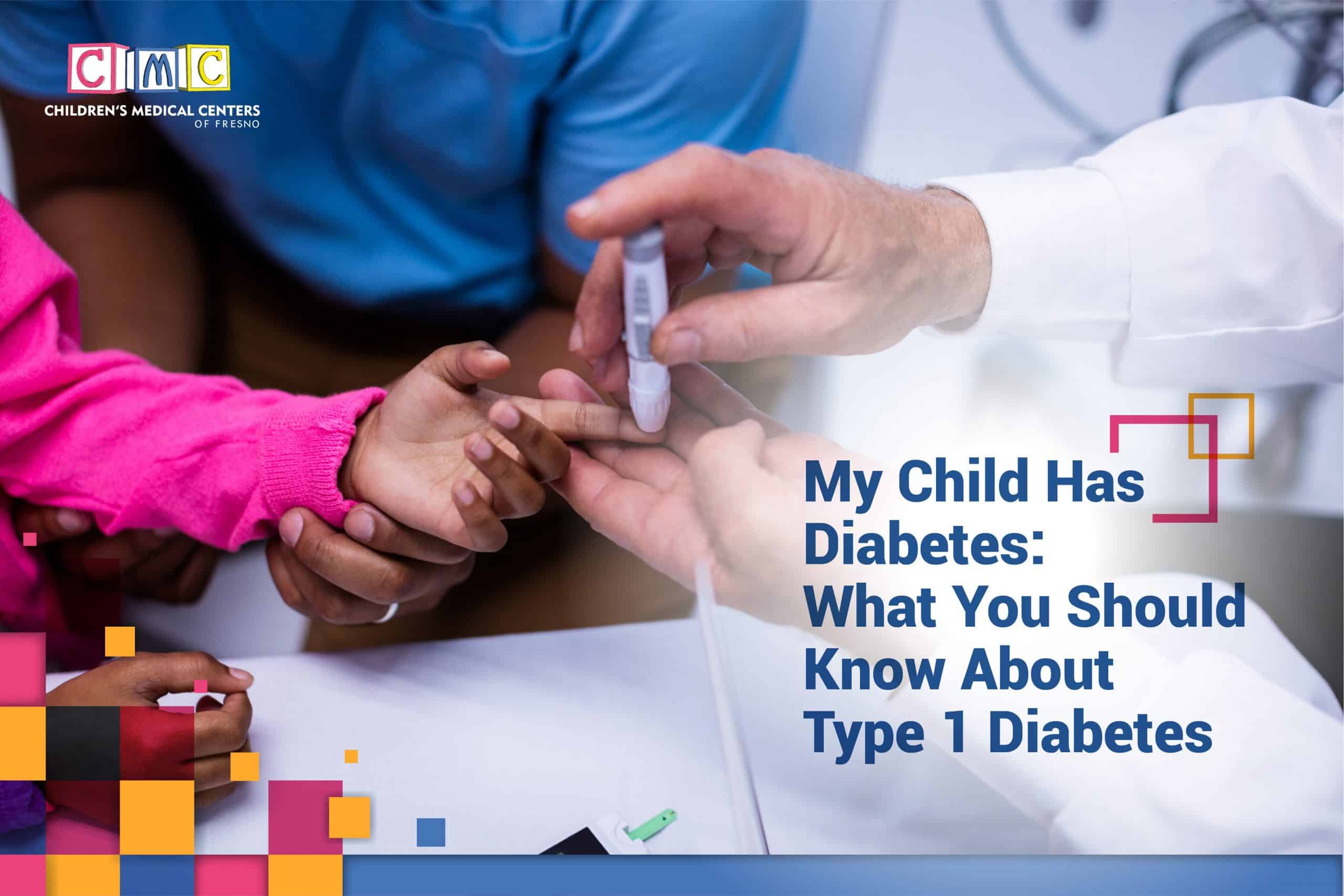Do you have a child who was recently diagnosed with Type 1 diabetes? Type 1 diabetes can change the lives of both you and your child. It can be challenging to cope with every day, and the challenge is even more significant for children.
Once a diagnosis has been made, it is vital to educate yourself about all aspects of living with diabetes—including diet, exercise, medical management, and lifestyle. This article will help parents learn about the facts, symptoms, and ways to cope better with Type 1 diabetes.
What is Type 1 Diabetes?
Type 1 Diabetes, also known as insulin-dependent, childhood-onset diabetes or juvenile diabetes, is an autoimmune disease in which the body fails to metabolize sugar properly. It occurs when the body’s immune system destroys insulin-producing beta cells in the pancreas. The hormone insulin aids sugars, or glucose, in entering the cells to provide energy. Without insulin, sugar levels in the bloodstream remain too high, leading to a variety of health problems that can range from mild to severe. This includes:
- hyperglycemia or high blood sugar
- hypoglycemia or low blood sugar
- Diabetic ketoacidosis (DKA)
- complications that can lead to blindness, kidney failure, and heart disease
- nerve damage that can lead to amputations
What Causes Type 1 Diabetes?
Type 1 diabetes is not known to have a specific cause. As autoimmune disorders may run in families, there may be a hereditary component. However, there is no known way to prevent autoimmune attacks on insulin-producing beta cells in the pancreas, resulting in this form of diabetes.
Type 1 Diabetes Symptoms
It’s important to know the symptoms of type 1 diabetes to get help quickly. If you notice any signs, take your child for an evaluation right away. Early diagnosis and treatment will make a huge impact on their quality of life over time. Warning signs of type 1 diabetes include:
- excessive thirst
- dry mouth
- rapid breathing
- recurring thrush
- blurry vision
- bladder or vaginal infections
- unexpected weight loss
- having a fruity breath
- weakness and fatigue
- mood swings and irritability
- a frequent need to urinate
- feels hungry even after eating
- constipation, vomiting, dizziness, and confusion
- bed-wetting in kids who did not previously wet the bed
- cuts and scratches that are slow to heal or don’t heal
Diagnosis of Type 1 Diabetes
Children exhibiting any of these symptoms may not necessarily have diabetes. However, it means they should see their pediatrician for further examination. The doctor will perform a urine test and test your child’s blood glucose levels. In case these tests reveal diabetes, treatment must begin immediately. You should expect your kid to need a short hospital stay to ensure proper blood sugar management and develop a treatment plan. Moreover, you will receive proper instruction from your healthcare professional, including blood sugar tests and insulin injections.
What to Do When Your Child Has Diabetes
Type 1 diabetes is a chronic, autoimmune condition that needs lifelong management. It is not curable despite current research efforts. To prevent complications, treatment focuses on controlling blood sugar levels with dietary changes, insulin, and lifestyle modifications.
Daily Insulin Shots
Insulin injections are necessary to replace what the body cannot produce on its own. It enables glucose to enter cells from the bloodstream. Every person with type 1 diabetes must take insulin every day. The most common method of administering insulin is injecting it under the skin with a syringe, insulin pen, or insulin pump. Besides injectable insulin, there is also inhaled insulin.
Depending on your condition, your provider will determine the best type of insulin for you and the optimal time of day to administer it. For the best blood glucose control, doctors can recommend combining certain types of insulin. Others, however, should not be combined. Initially, a parent or another adult should administer the injections to a child. Most children can inject themselves as they get older.
Regular Blood Glucose Testing
By measuring your child’s blood sugar using a glucose meter, you can determine what foods and activities will most affect their blood sugar. This allows you to adjust your insulin dose and prevent dangerously high or low blood sugar levels. Lancets are tiny needles used to poke your finger to draw a small drop of blood. Using a test strip, blood is placed on the meter before fitting the strip into the meter. The meter gives you a reading that informs you about the level of your child’s blood sugar.
Nutrition and Lifestyle Changes
A consistent lifestyle is essential for children with type 1 diabetes, including dietary changes and fitness programs. Making healthier food choices can help control diabetes better. For their meals, it’s good to do the following:
- Choose low glycemic foods to gradually elevate blood sugar, allowing ample time for the body to respond to insulin injections.
- Prepare a balanced diet rich in vegetables, nonfat dairy, lean meat, healthy fats, and whole grains.
- Avoid simple carbohydrates, refined sugars, processed food, and trans fats.
- Maintain a regular eating schedule and don’t allow them to skip meals. Eating late or skipping a meal puts them at risk for low blood sugar or hypoglycemia.
- Let your child consume small meals. To prevent a spike in their glucose level, they should eat frequently and in smaller portions throughout the day.
Resources for meal planning are also available at this link. Moreover, a qualified dietitian or nutrition counselor will be a big help.
Exercise regularly also assists in regulating blood sugar levels. Additionally, it helps burn more calories and fat so that your child can maintain a healthy weight. Consult your provider before your child can begin any exercise program. When exercising or participating in physical activity, patients with type 1 diabetes need to take additional precautions.
Make Sure to Have Regular Check-up and Attend Yearly Screening Tests
Regular diabetic check-ups and screenings are highly recommended. By taking these tests, your child will have the most effective diabetes treatment. Diabetic patients who see their doctor at least four times a year experience better blood sugar control, better health outcomes, and fewer hospital stays than those who see the doctors less frequently.
Further screenings will be required once a year to detect early signs of other complications. This usually begins five years after diagnosis. Tests may include:
- Neuropathy
- Retinopathy
- Hypertension
- Urine test for albuminuria
- Thyroid function examinations
Identify Signs of Hypoglycemia
In addition to elevated blood sugar levels caused by diabetes, children with Type 1 diabetes are also at risk for dangerously low levels of blood sugar (hypoglycemia) that need immediate attention. Children often display symptoms such as restlessness, anxiety, and dizziness.
Make Sure Your Child Wears a Medical Bracelet or Necklace
Your child should wear a medical ID bracelet or necklace at all times. These accessories serve as a quick reminder of the following during an emergency.
- who to contact
- what type of diabetes does your child have
- how to administer medications
Preparing Children for a Life with Diabetes
Managing Type 1 diabetes can be challenging for both the child and the parent. But children with diabetes can live a normal, productive life if they receive the proper care, exercise, nutrition, and blood glucose control. Hopefully, this article has helped you gain a better understanding of Type 1 diabetes.
If you have any questions about diabetes or are concerned that your child may have this condition, we at CMCFresno would be glad to help you. Call or schedule an appointment online today!



